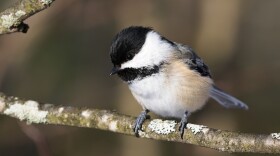-
New research published in Nature Scientific Reports reveals how gray wolves in Isle Royale National Park seasonally alter their habitat preferences to align with beavers’ habitat preferences, a shift that might have implications for the island’s ecosystem.
-
The likelihood of hitting an animal with your car in Michigan is more than twice as high as the national average, based on State Farm data from the past year.
-
You-pick farms have been seeing customers picking their own fruits and vegetables across the state this summer. From blueberries and strawberries to tomatoes and asparagus, many people have opted for gathering their produce themselves.
-
A new study in the journal Freshwater Science sheds light on these oft-overlooked rodents and their ecosystem-altering behaviors – and how humans might replicate their actions to combat invasive aquatic plants.
-
The Department of Agriculture and Rural Development is trying to control the invasive box tree moth that damages boxwoods. The quarantine zone now covers Clinton, Lapeer, St. Clair, Eaton, Ingham, Livingston, Oakland, Macomb, Jackson, Washtenaw, Wayne, Lenawee and Monroe counties.
-
The annual “Great Backyard Bird Count” asks people to track the birds they see and hear over a few days. The information can help researchers better understand bird populations and whether species are declining.
-
The monarch butterfly population continues to shrink due to factors such as climate change. People working to help the species say proposed federal protections could boost existing efforts.
-
State submits bid for federal "hot spot" wildlife crossing funding to reduce wildlife/car collisions
-
"What's a bit unusual in this case is: it's not just that people are seeing wolves, but the wolves seem to be investigating human food sources..."
-
After legal challenges from environmental groups, the U.S. Fish and Wildlife Service has agreed to reconsider its decision to not protect the Kirtland's snake under the Endangered Species Act.
Play Live Radio
Next Up:
0:00
0:00
Available On Air Stations










